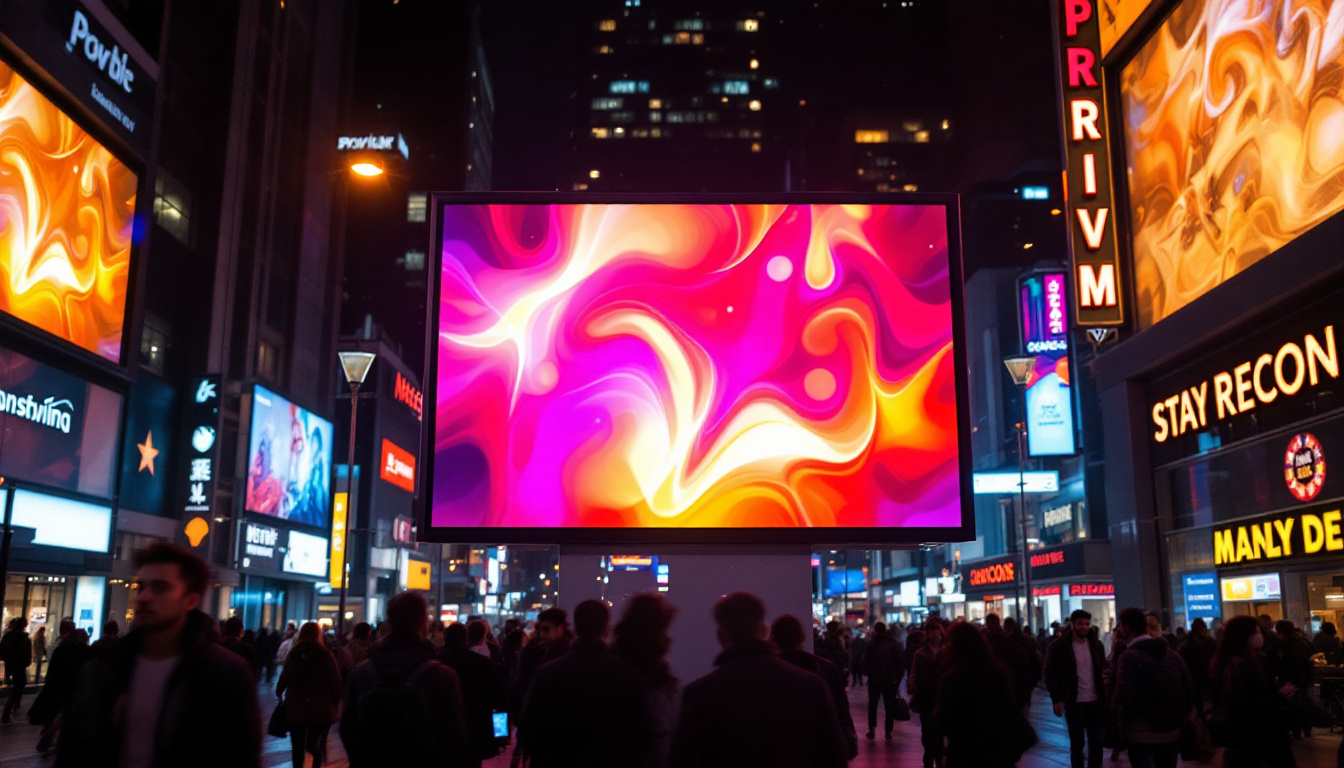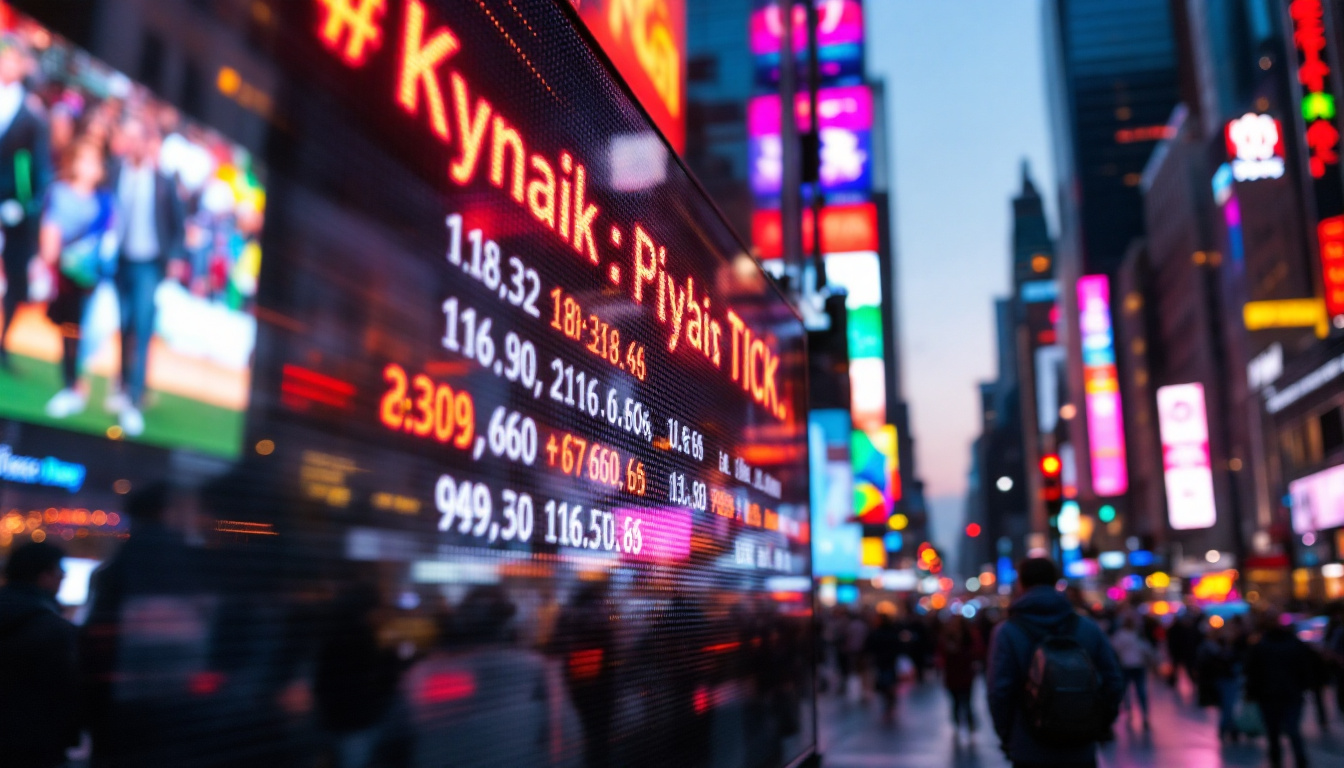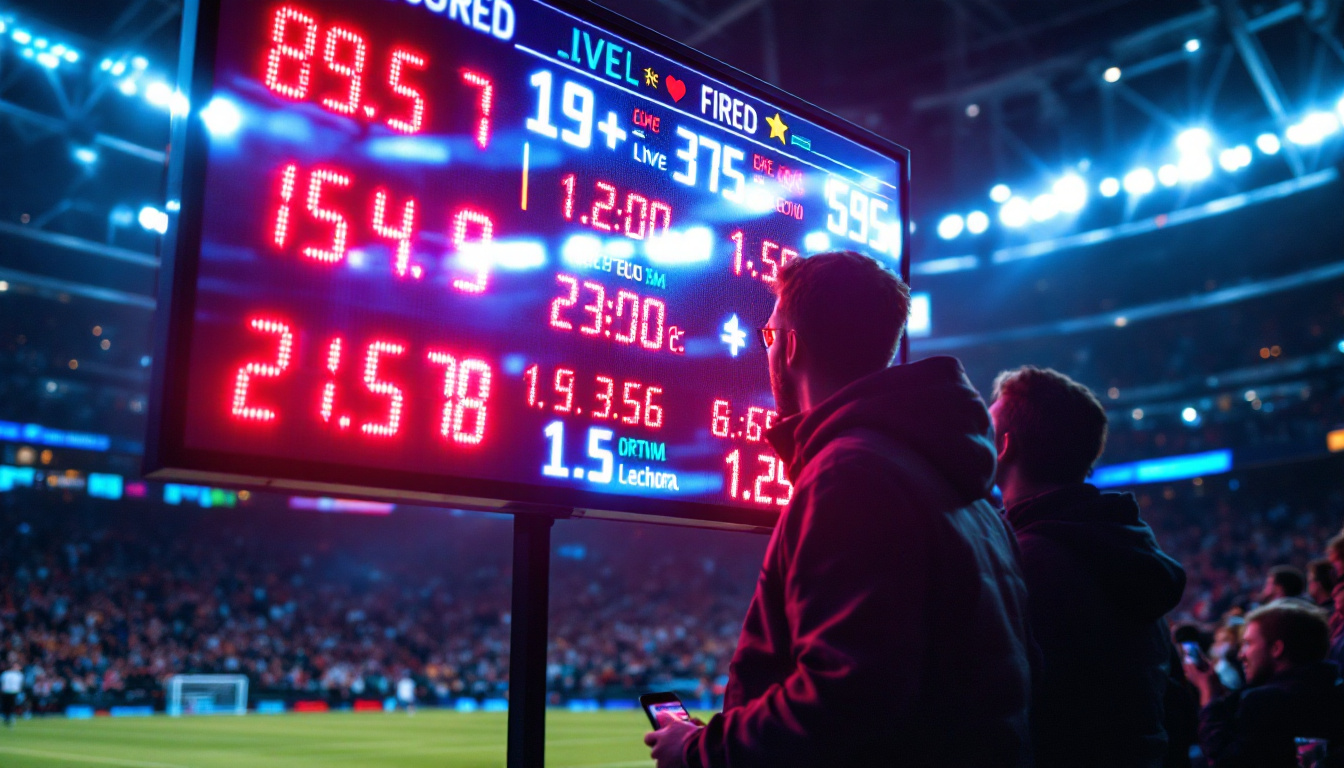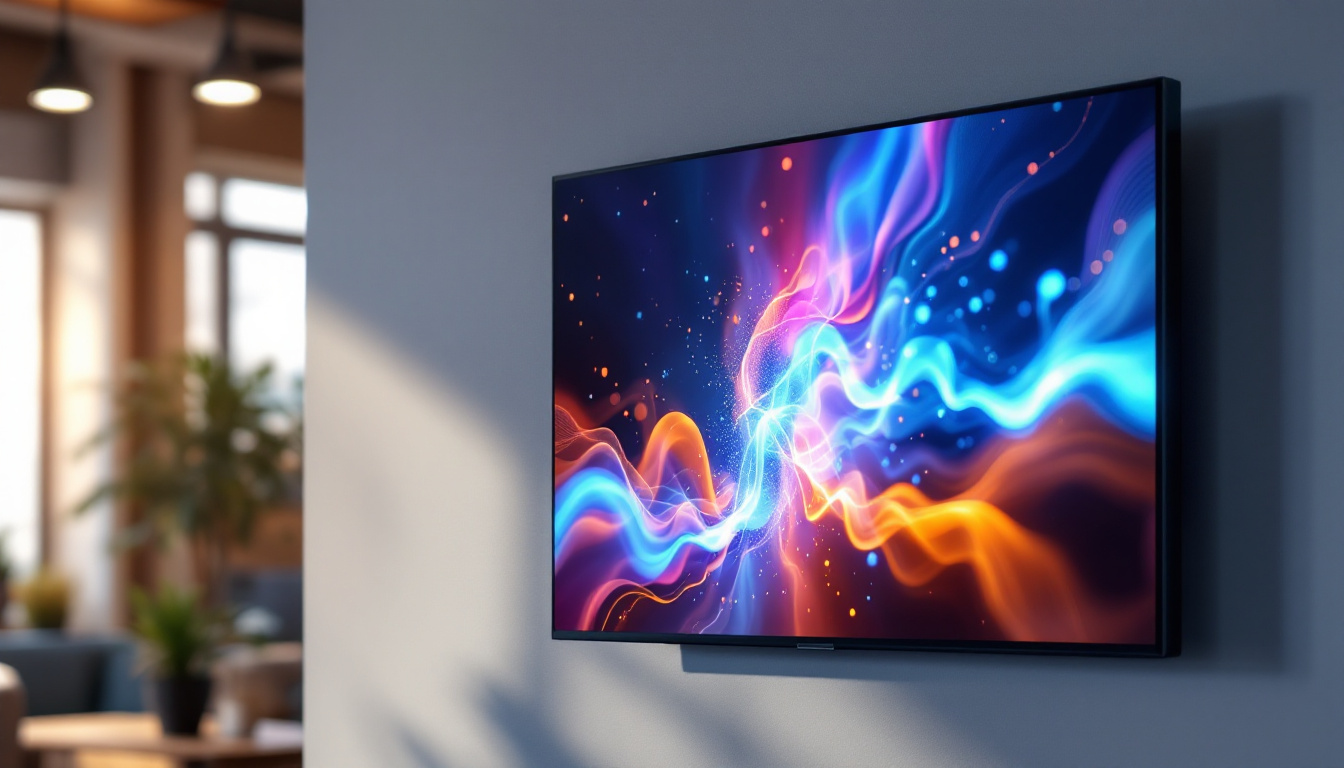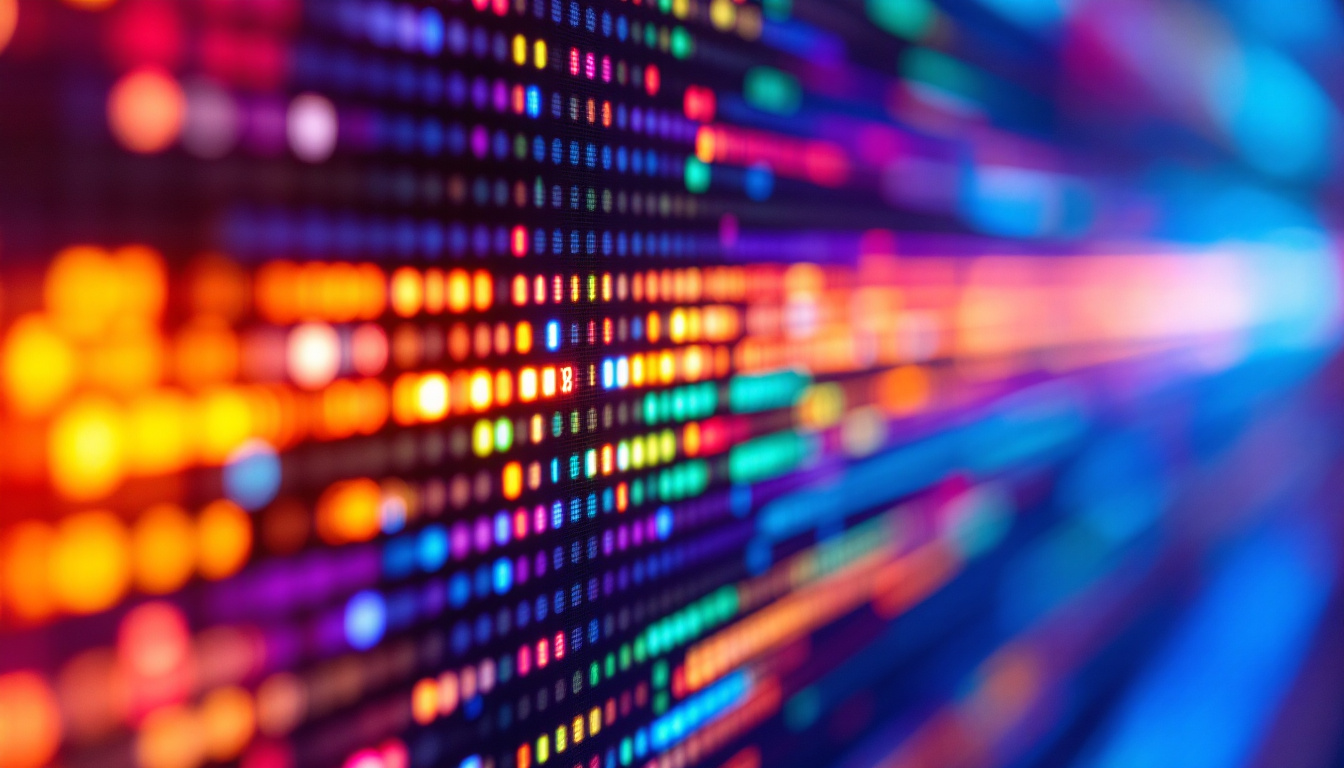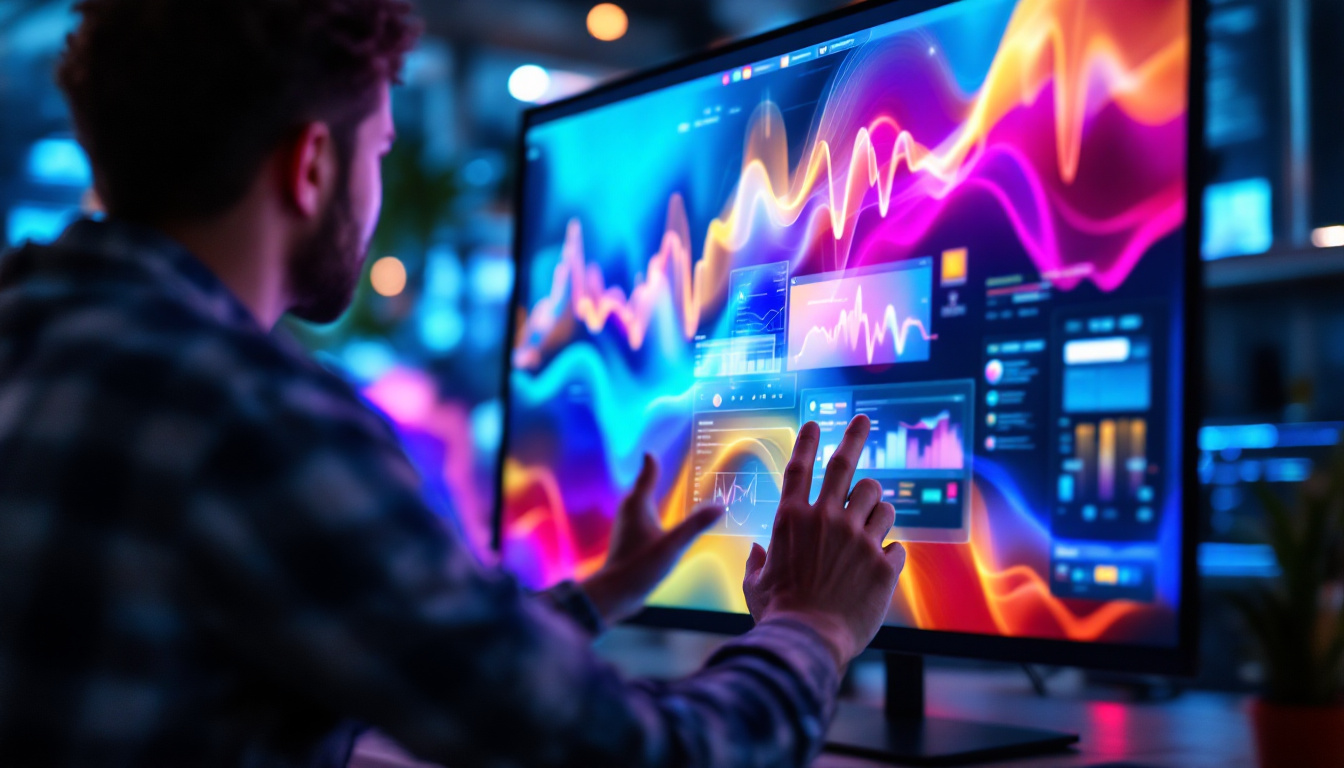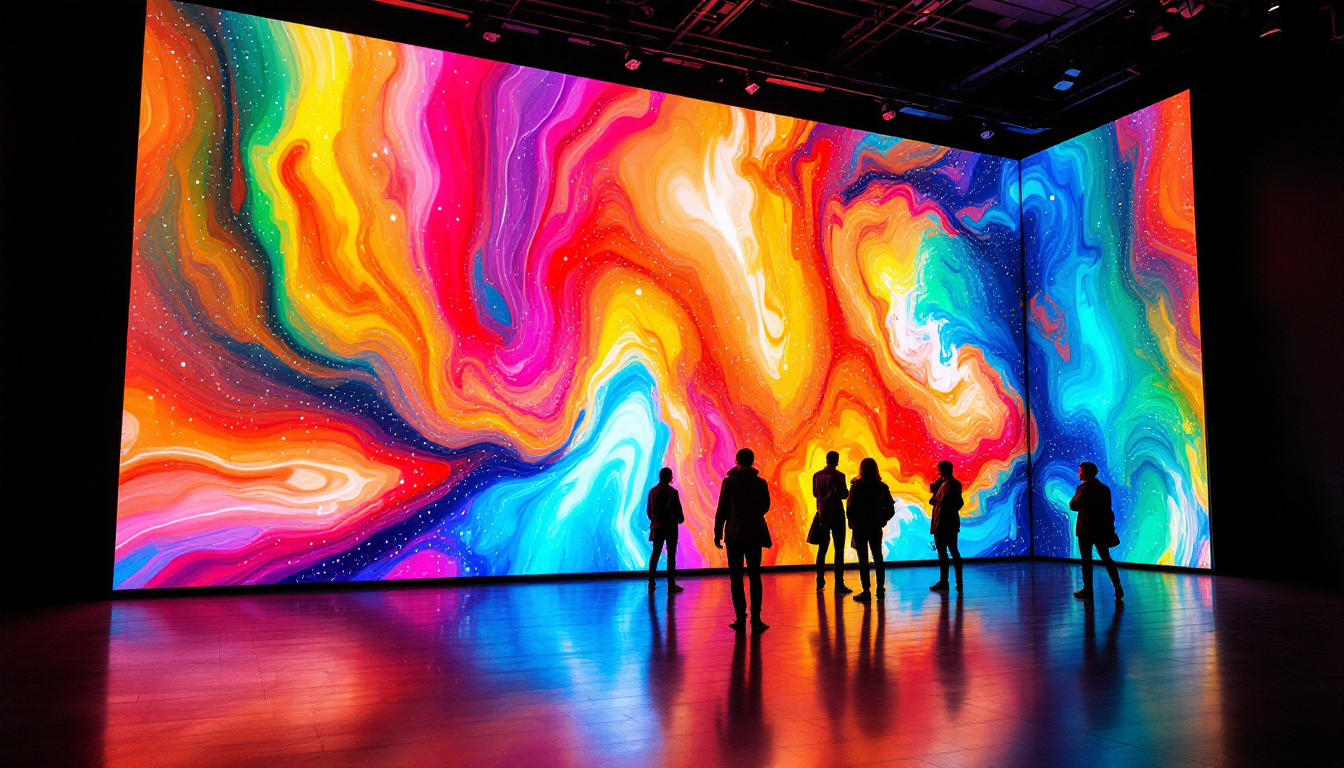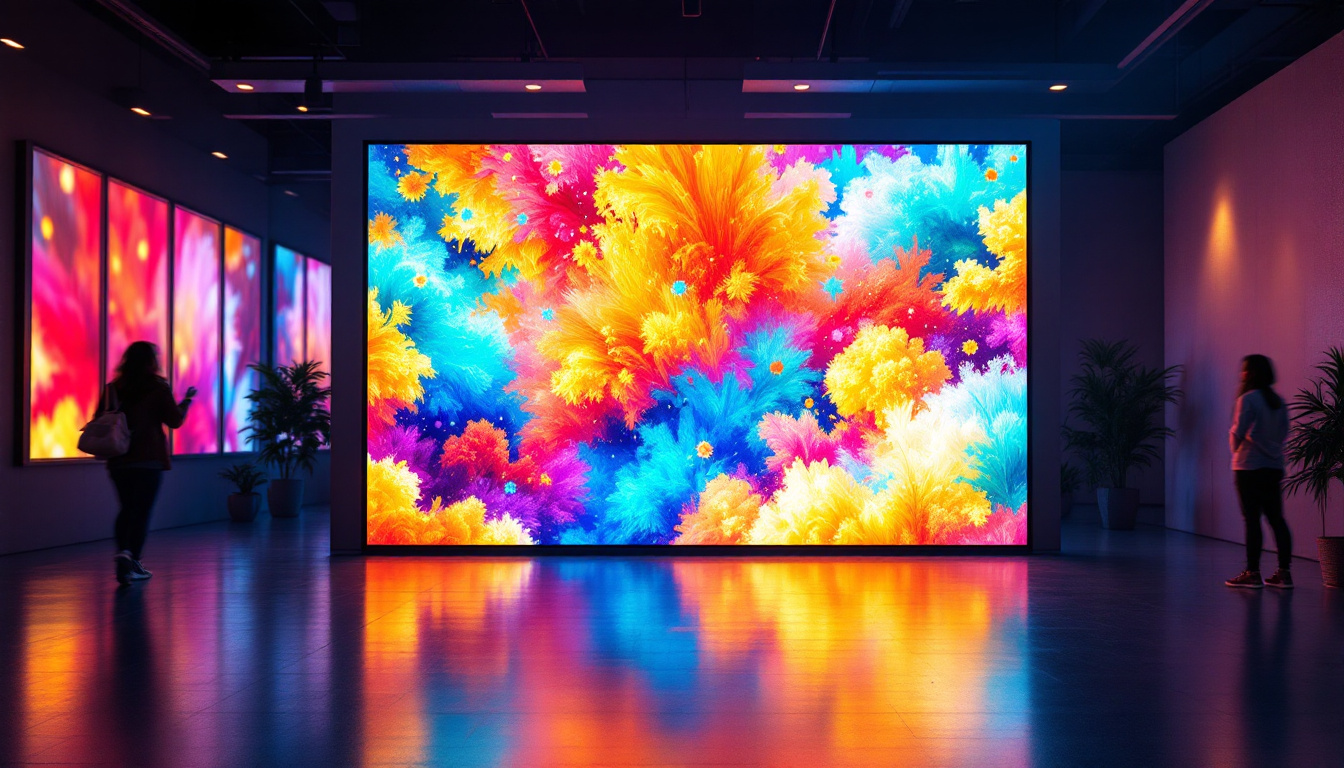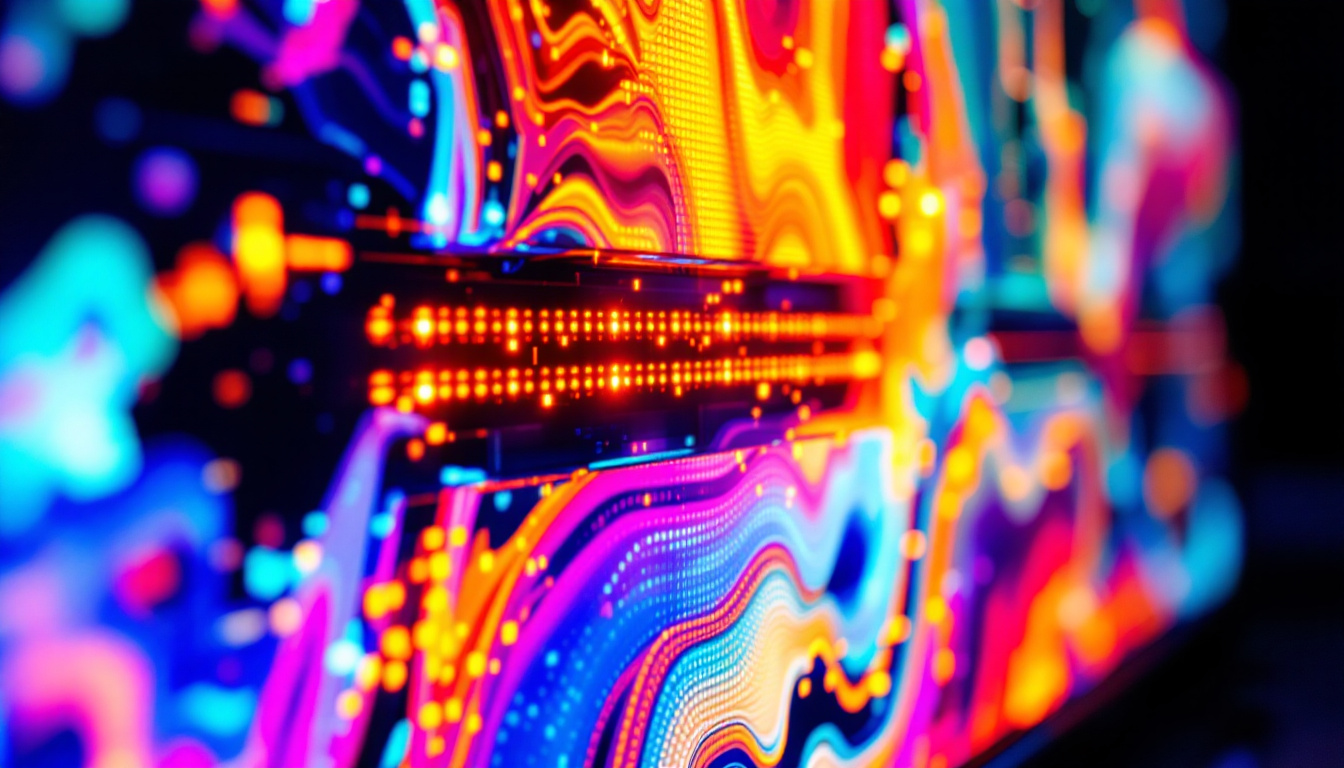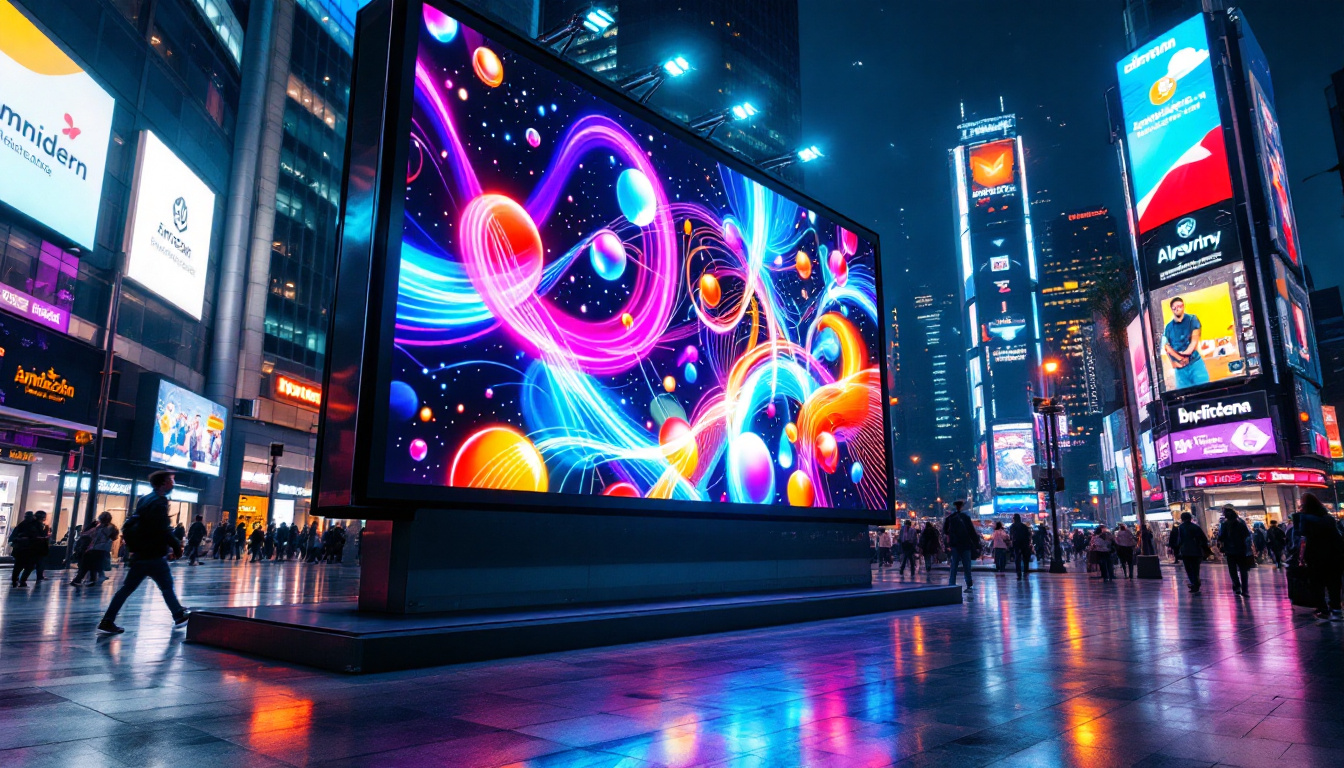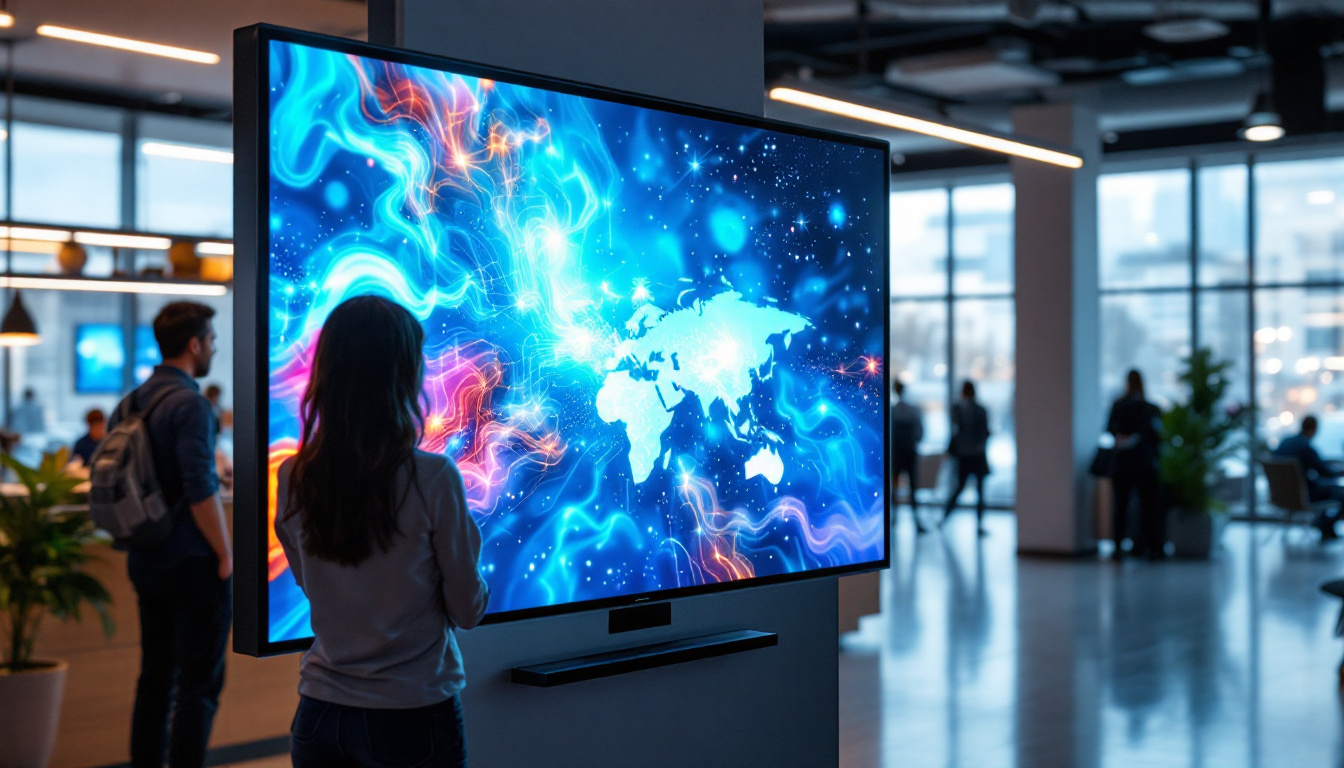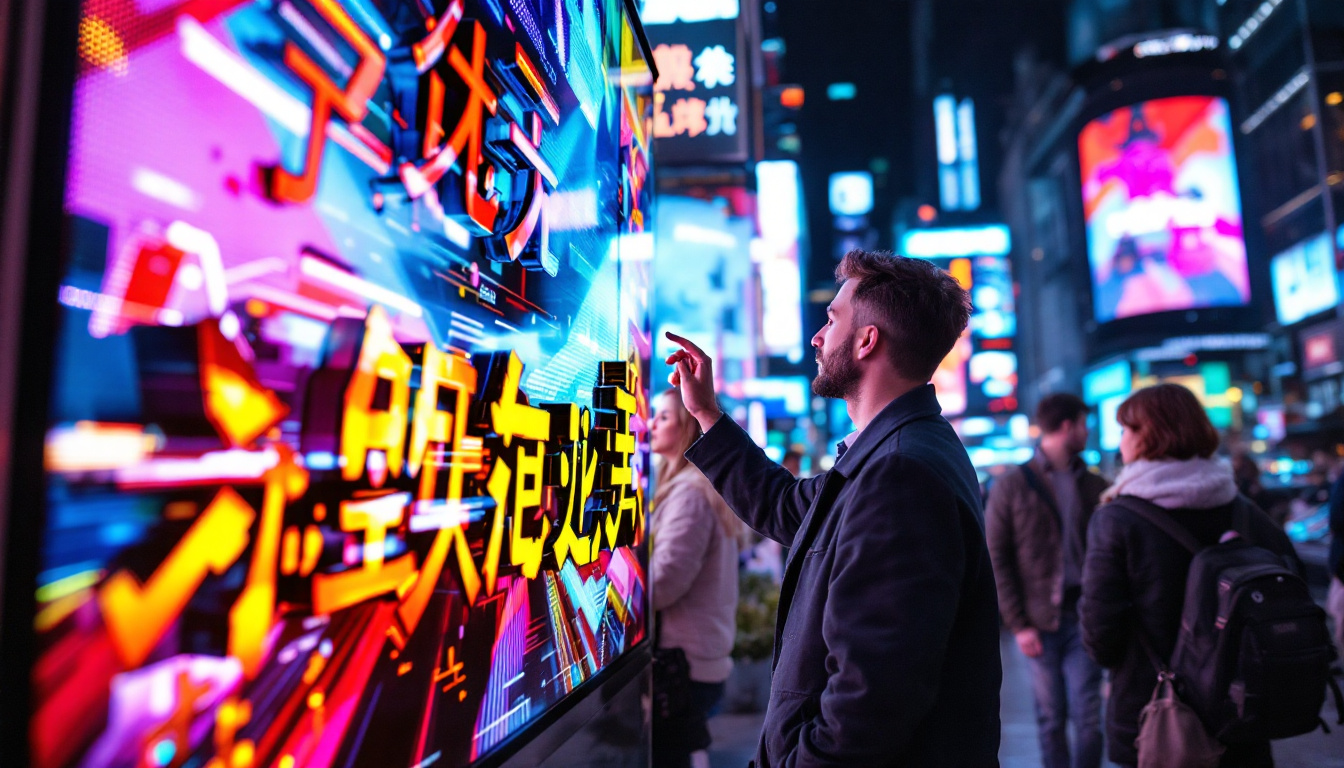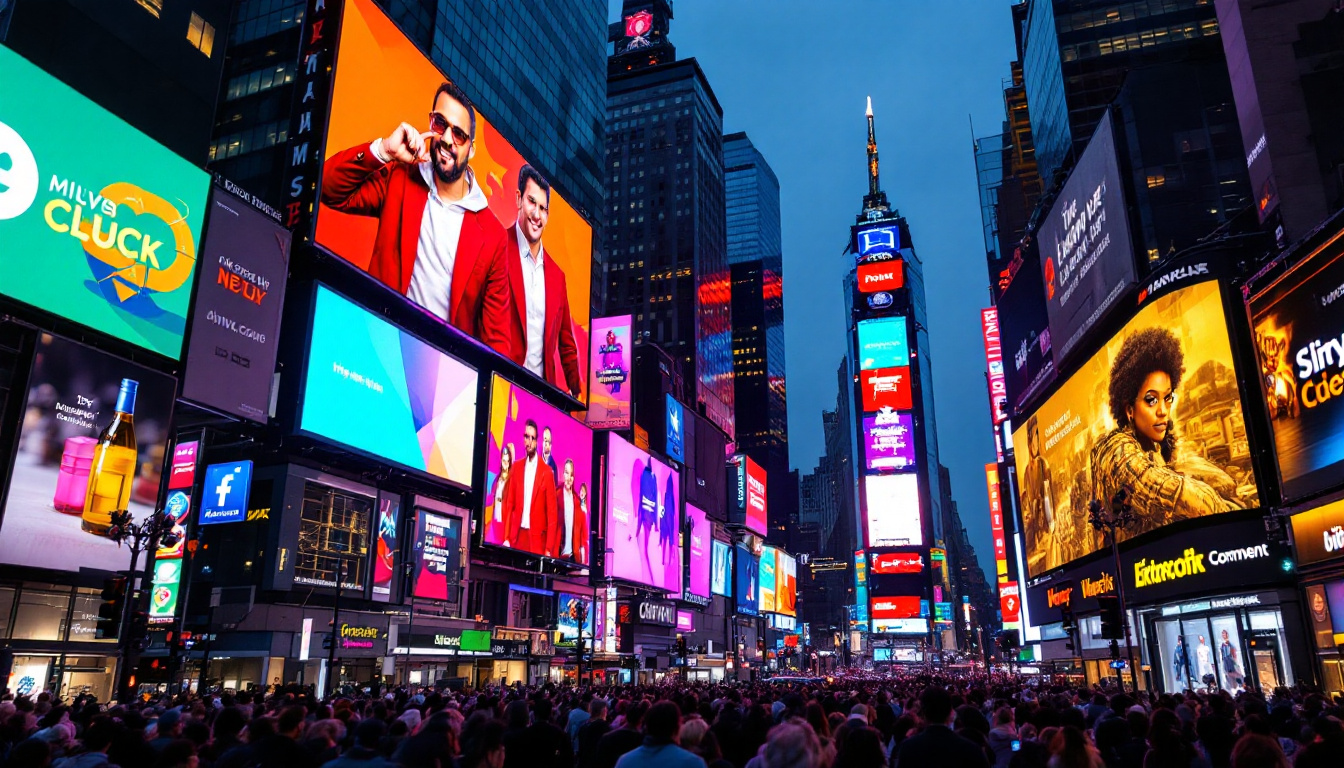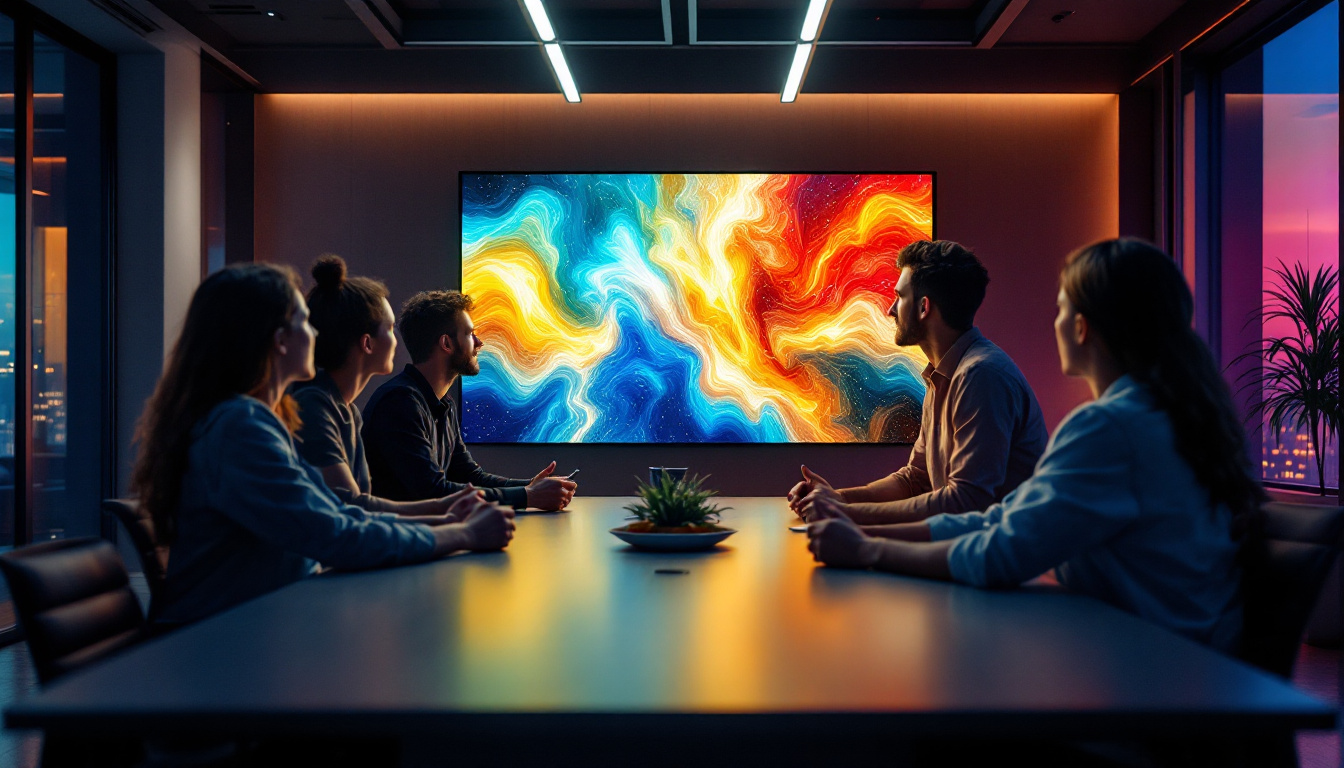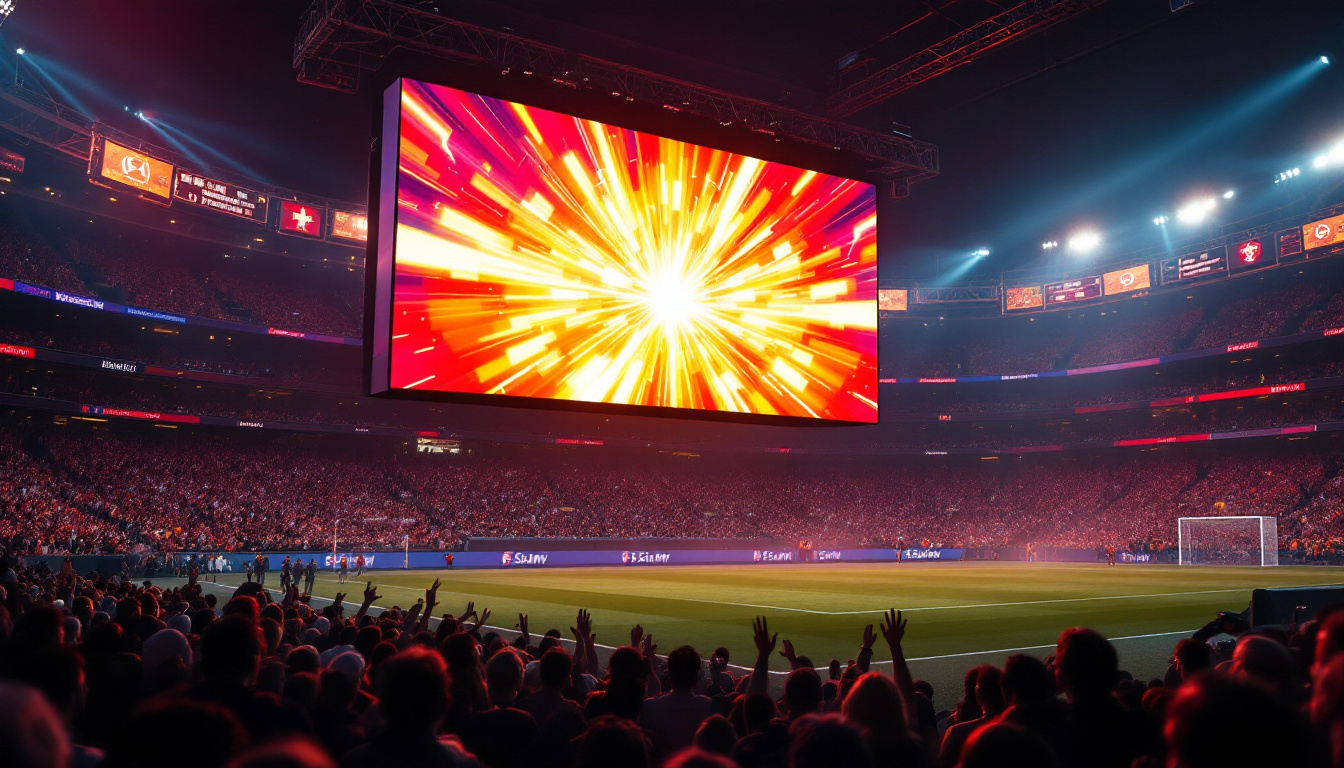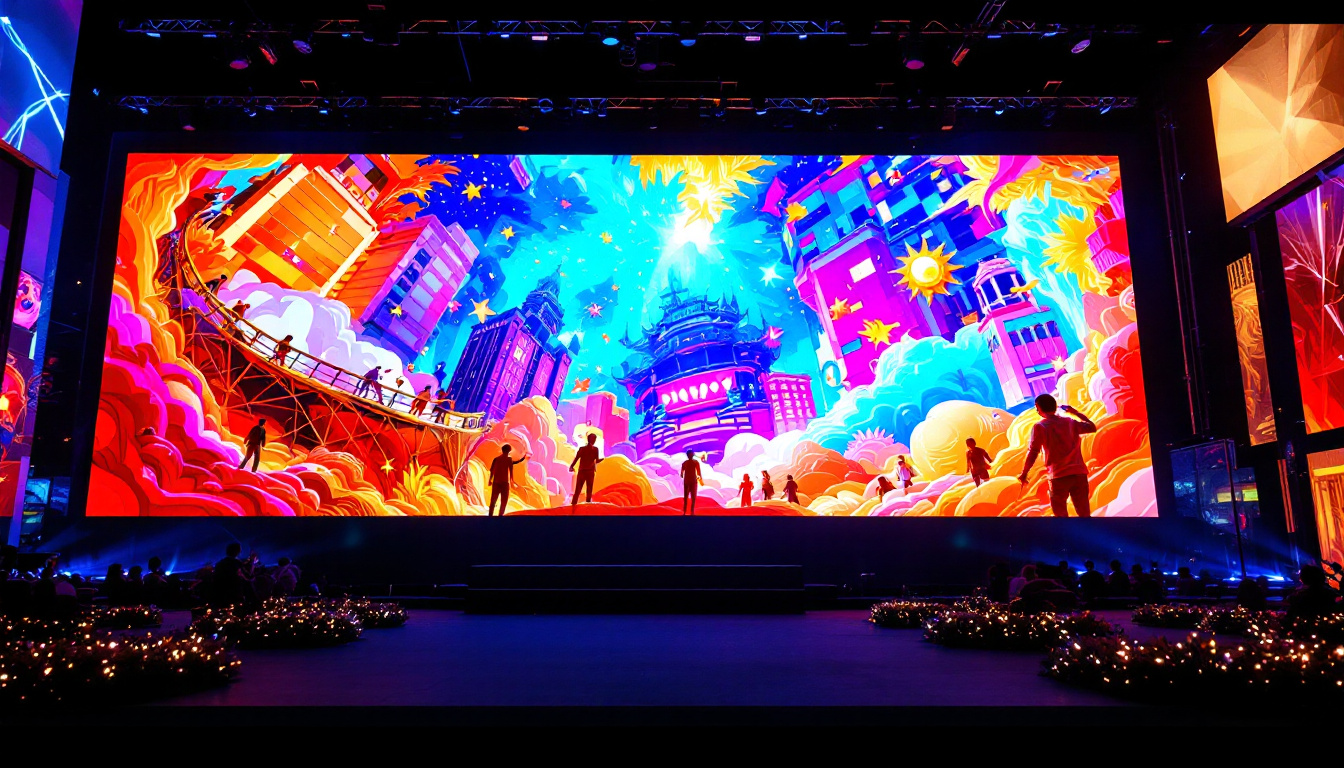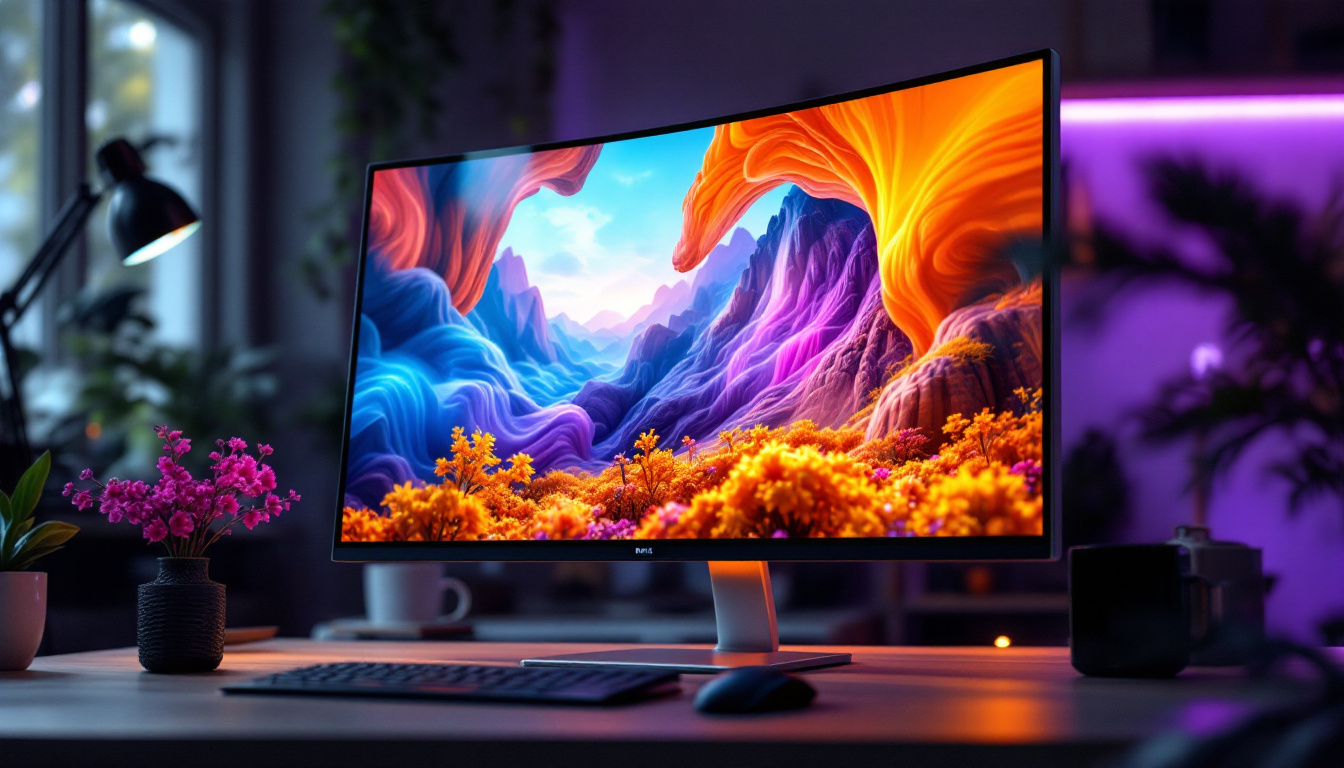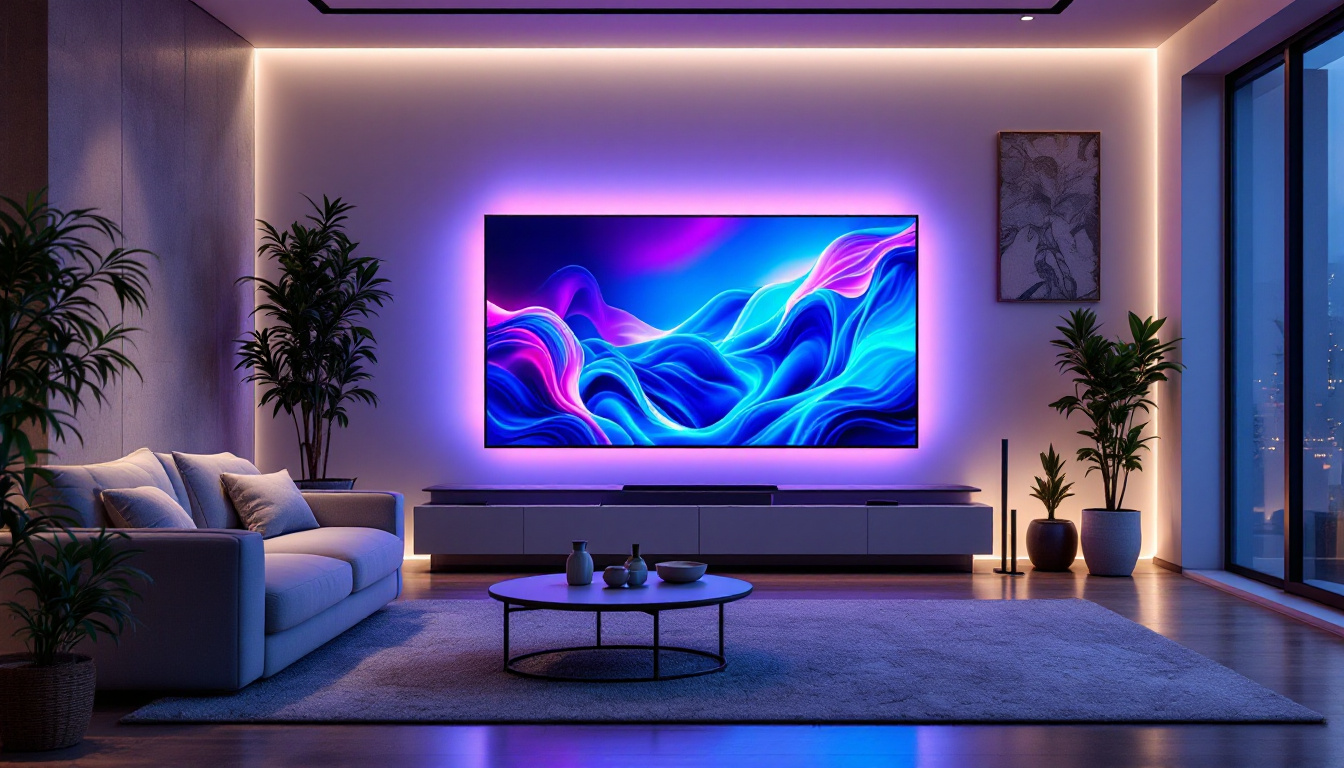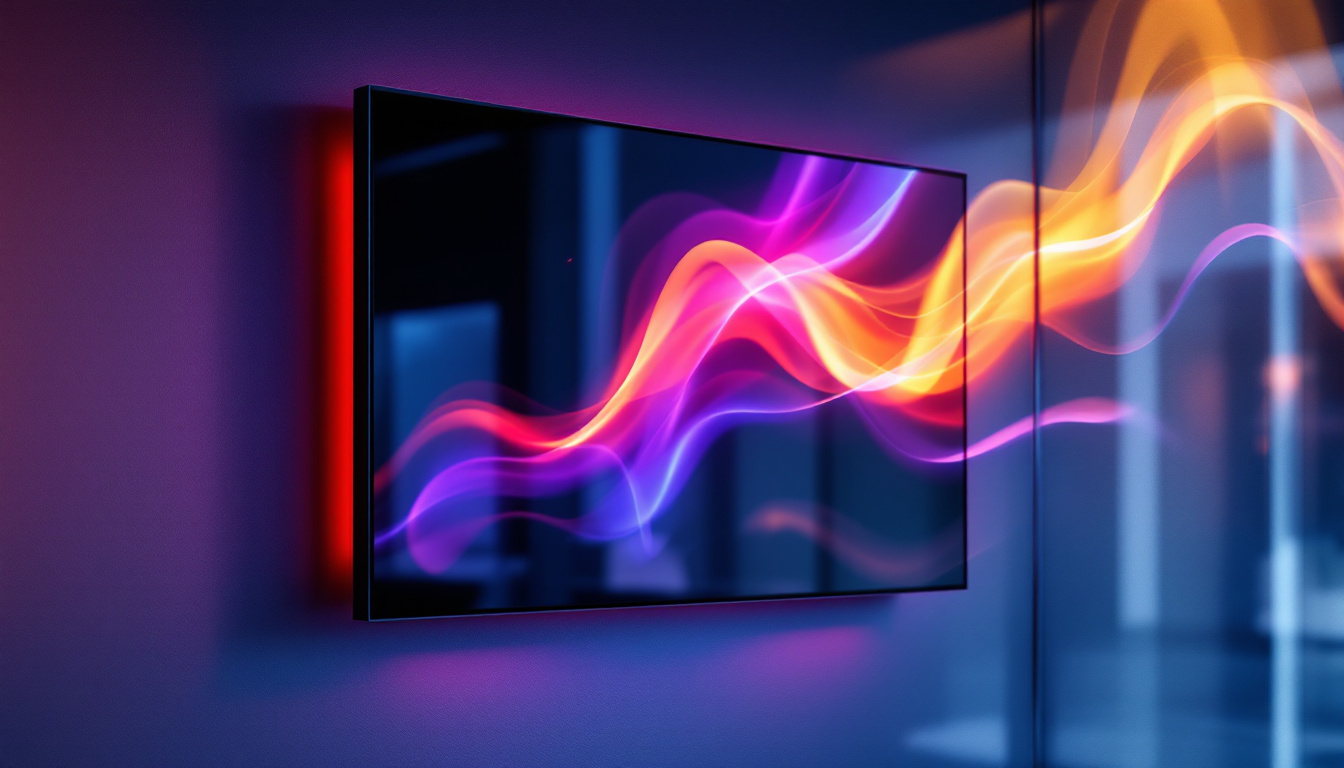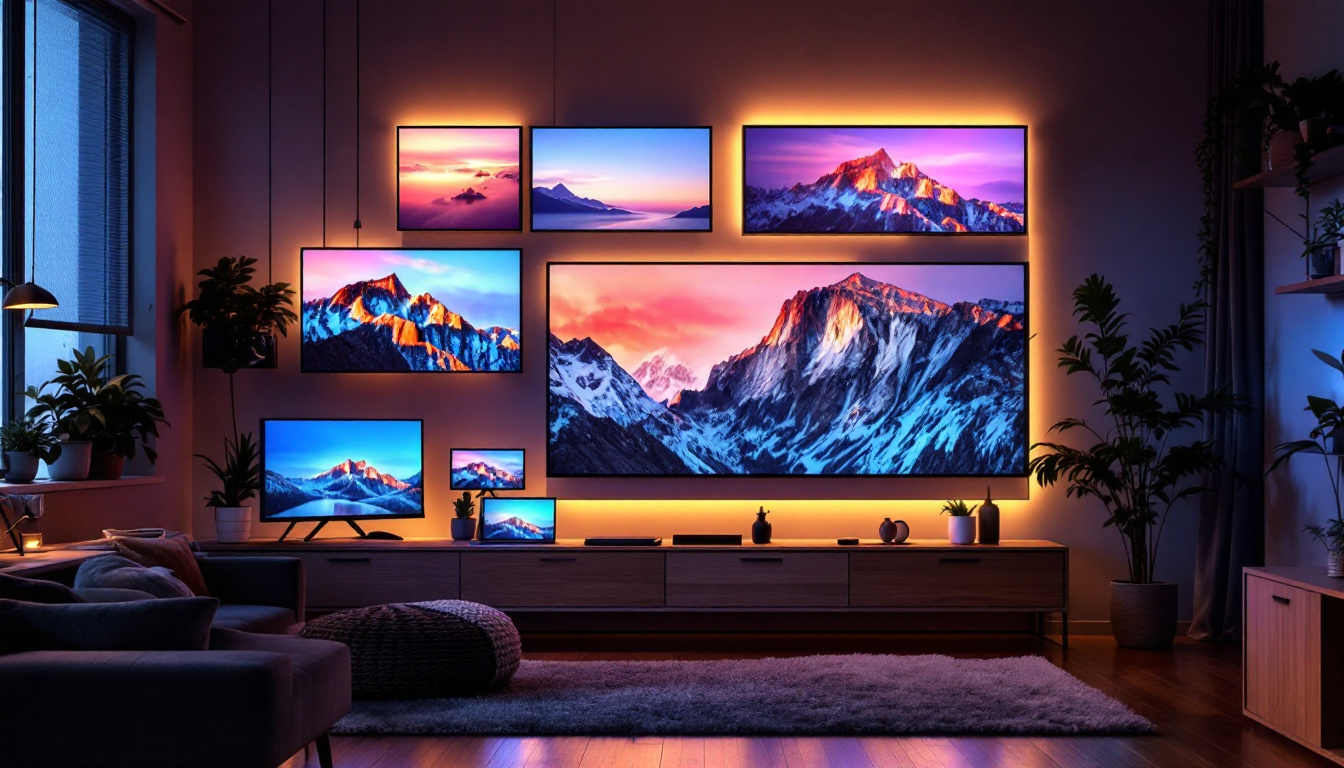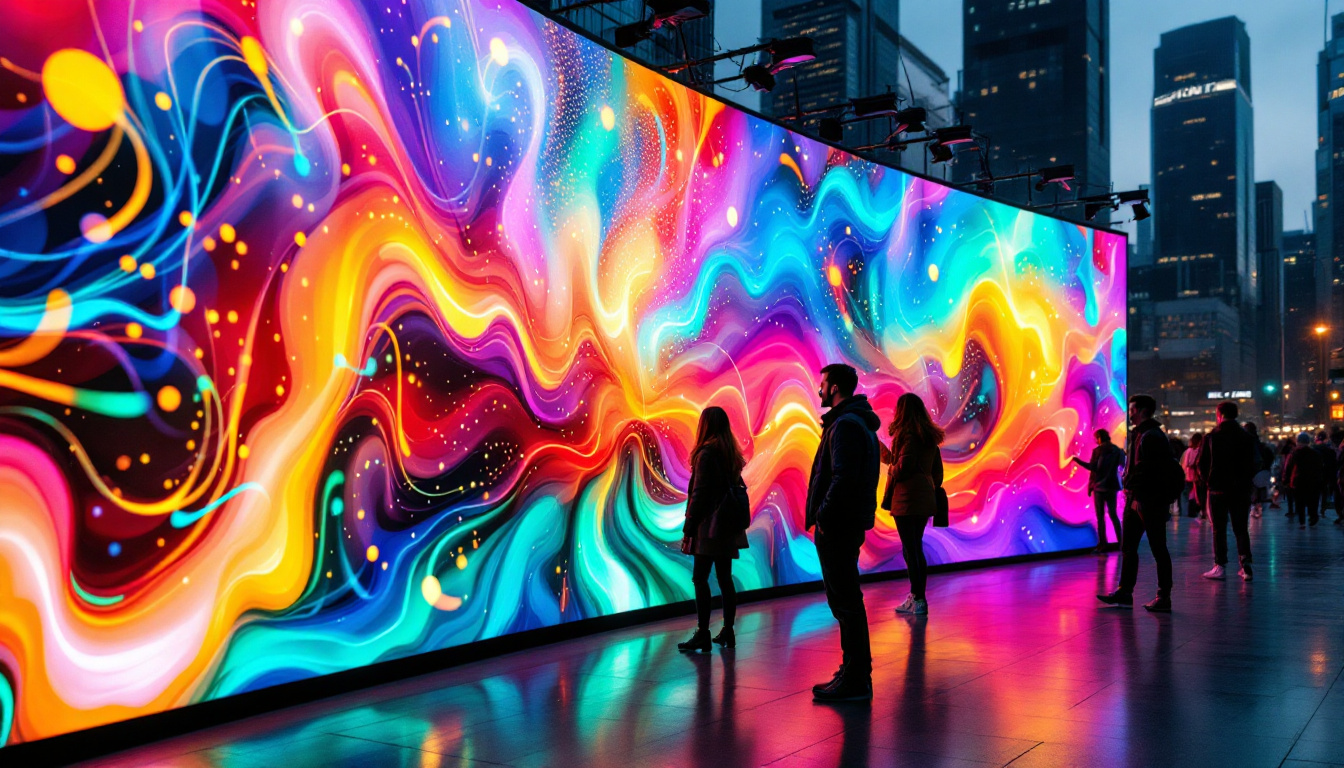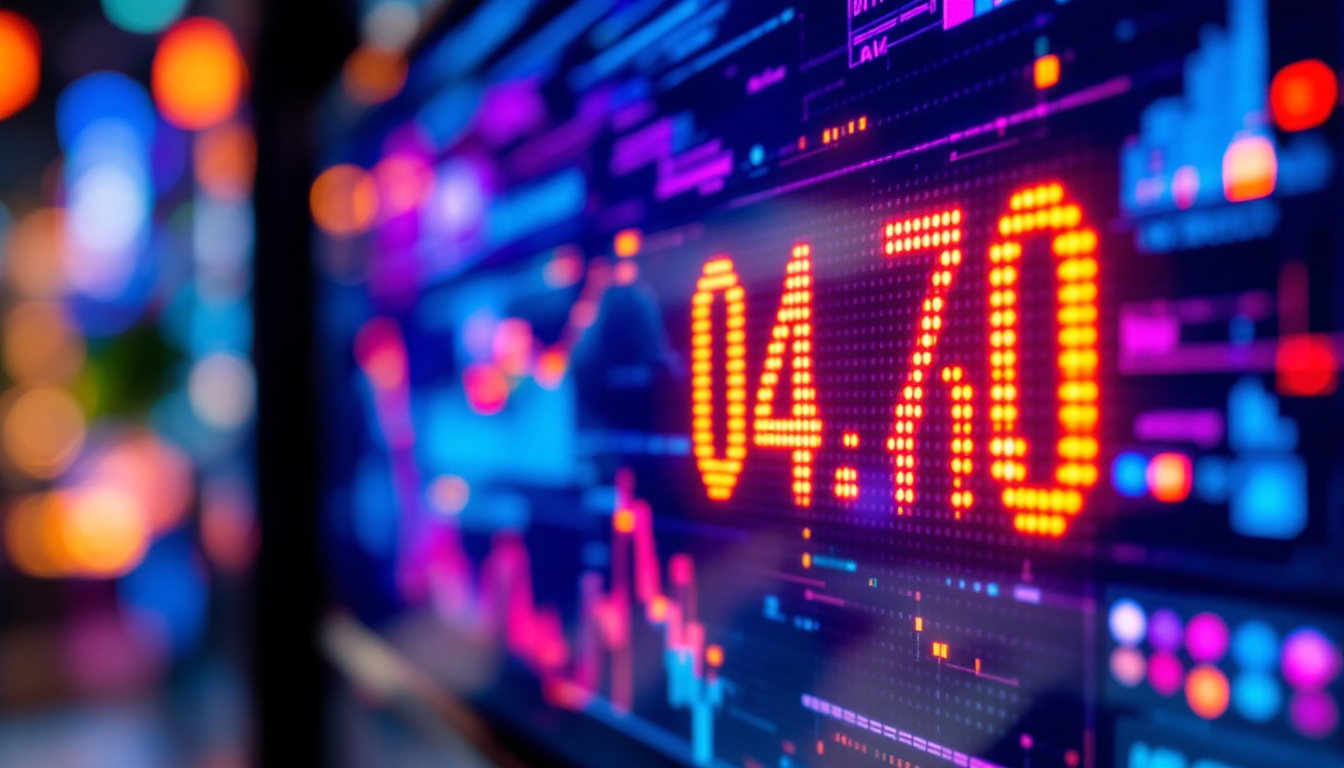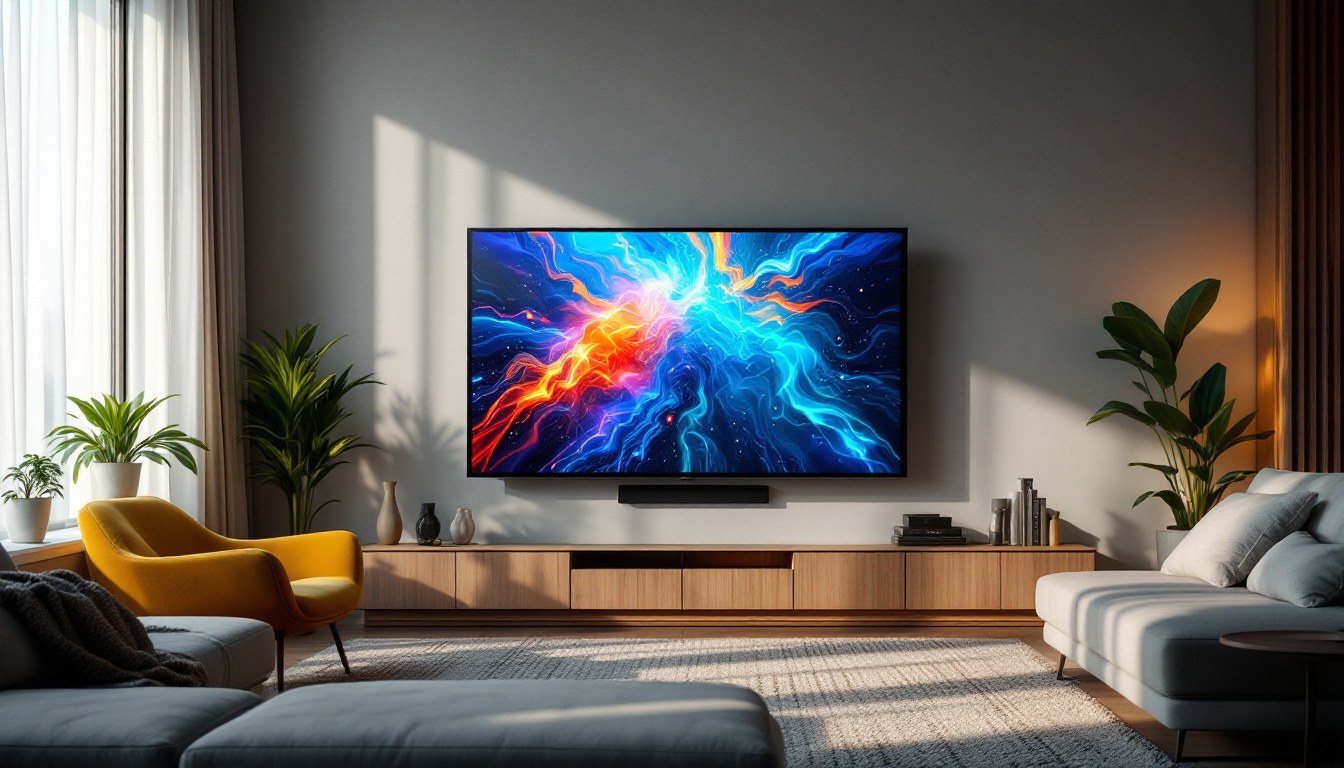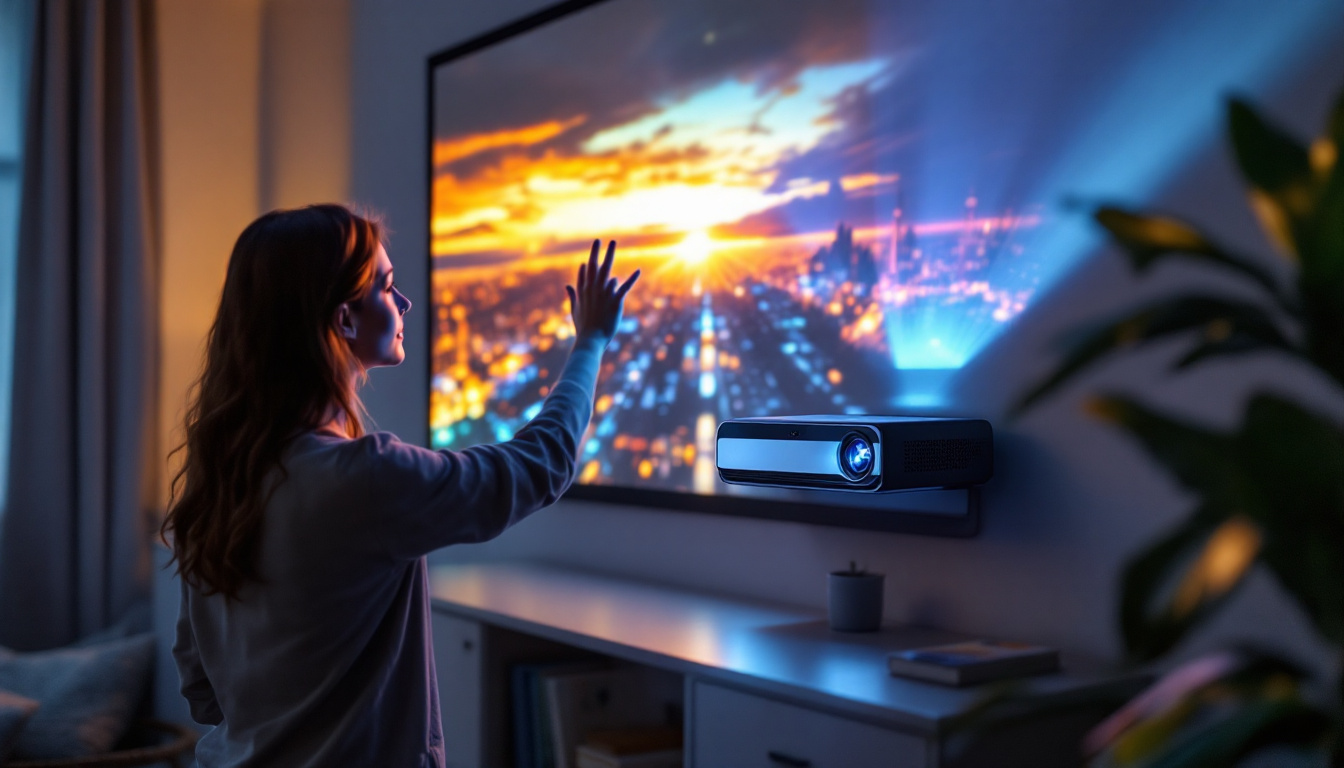In today’s fast-paced world, the need for effective communication has never been more critical. Large display boards, particularly those utilizing LED technology, have emerged as a powerful tool for conveying information in various settings. From sports arenas to corporate environments, LED displays offer vibrant visuals and dynamic content that can capture the attention of any audience. This article delves into the intricacies of LED displays, exploring their technology, applications, and advantages.
Understanding LED Technology
LED, or Light Emitting Diode, is a semiconductor device that emits light when an electric current passes through it. This technology has revolutionized the way we think about displays, providing a brighter, more energy-efficient alternative to traditional lighting methods. The compact size and longevity of LEDs have made them a popular choice not only for screens but also for general lighting, automotive applications, and even in horticulture, where they are used to promote plant growth.
The Basics of LED Functionality
At its core, an LED display consists of numerous individual diodes arranged in a grid format. Each diode can emit red, green, or blue light, and by combining these colors in varying intensities, a full spectrum of colors can be produced. This RGB (Red, Green, Blue) model is fundamental to how images and videos are rendered on LED screens. The precise control over these colors allows for stunning visual effects and high-definition imagery, making LED technology a favorite in the entertainment industry for concerts and theatrical productions.
When an electric current flows through the diode, it excites the semiconductor material, causing it to emit light. The intensity of this light can be adjusted by varying the current, allowing for a wide range of brightness levels. This adaptability makes LED displays suitable for various environments, from dimly lit rooms to bright outdoor settings. Additionally, the rapid response time of LEDs means that they can display fast-moving images without blurring, which is crucial for applications such as video gaming and live broadcasting.
Types of LED Displays
LED displays come in several types, each designed for specific applications. The most common types include:
- Indoor LED Displays: These are typically used in settings such as shopping malls, conference rooms, and theaters. They are designed to perform well in low-light conditions, offering high resolution and vibrant colors. The pixel density of indoor displays is generally higher, which enhances image clarity and detail, making them ideal for close viewing distances.
- Outdoor LED Displays: Built to withstand the elements, outdoor displays are brighter and more durable. They are often used for billboards, sports arenas, and public signage. These displays are engineered with protective coatings to resist water, dust, and UV rays, ensuring longevity even in harsh weather conditions. The brightness of outdoor LEDs can reach levels that are visible even in direct sunlight, making them effective for advertising and information dissemination.
- Transparent LED Displays: These innovative displays allow for visibility through the screen while still showcasing content. They are often used in retail environments to create eye-catching advertisements without obstructing views. This technology not only enhances the aesthetic appeal of storefronts but also provides a unique way to engage customers by blending digital content with the physical environment.
In addition to these primary types, there are also specialized LED displays such as flexible LED screens that can be bent or shaped to fit unconventional spaces, and high-definition LED walls that combine multiple panels to create a large, cohesive display. The versatility of LED technology continues to expand, paving the way for new applications and creative uses in various industries.
Applications of LED Displays
The versatility of LED displays makes them suitable for a wide range of applications across various industries. Their ability to deliver high-quality visuals and dynamic content has led to their adoption in numerous sectors.
Advertising and Marketing
One of the most prominent uses of LED displays is in advertising. Businesses leverage large LED screens to showcase advertisements, promotions, and brand messages in high-traffic areas. The bright colors and moving images attract attention, making them more effective than traditional static billboards.
Moreover, the content on LED displays can be updated in real time, allowing businesses to respond quickly to market changes or promote limited-time offers. This flexibility enhances engagement and can lead to increased sales and brand visibility.
Sports and Entertainment
In the realm of sports, LED displays have transformed the spectator experience. Stadiums and arenas utilize large screens to display live game footage, player statistics, and replays, enhancing fans’ enjoyment of the event. The ability to show dynamic content, such as animations and advertisements, keeps the audience engaged even during breaks in the action.
Concerts and live performances also benefit from LED technology. Large LED screens can create stunning visual effects that complement the music, providing an immersive experience for attendees. The versatility of LED displays allows for creative staging and dynamic presentations that captivate audiences.
Corporate and Educational Use
In corporate environments, LED displays serve as powerful communication tools. They can be used for presentations, meetings, and training sessions, providing clear visuals that enhance understanding and retention. The ability to display data, graphics, and videos in real time allows for more interactive and engaging presentations.
Educational institutions also utilize LED displays for various purposes, from displaying announcements to facilitating interactive learning experiences. In classrooms and auditoriums, these displays can enhance the learning environment by providing visual aids that support teaching materials.
Advantages of LED Displays
The growing popularity of LED displays can be attributed to several key advantages that set them apart from traditional display technologies. Understanding these benefits can help organizations make informed decisions about their display needs.
Energy Efficiency
One of the most significant advantages of LED technology is its energy efficiency. LED displays consume considerably less power than traditional LCD or projection systems, making them a more sustainable choice. This reduced energy consumption not only lowers operational costs but also minimizes the environmental impact.
Longevity and Durability
LED displays are designed to last. With a lifespan of up to 100,000 hours, they far outlast traditional display technologies. This longevity means less frequent replacements and lower maintenance costs over time. Additionally, LED displays are built to withstand harsh conditions, making them suitable for outdoor use where exposure to the elements is a concern.
High Brightness and Contrast
LED displays offer superior brightness and contrast compared to other display technologies. This capability ensures that content remains visible even in direct sunlight, making them ideal for outdoor advertising and public displays. The high contrast ratio also enhances the clarity of images and text, improving overall visibility.
Challenges and Considerations
While LED displays offer numerous advantages, there are also challenges and considerations that organizations should keep in mind when investing in this technology.
Initial Investment
The upfront cost of LED displays can be higher than traditional display options. While the long-term savings in energy and maintenance costs can offset this initial investment, organizations must evaluate their budget and determine the feasibility of such an expenditure. It’s essential to consider the return on investment (ROI) when making this decision.
Content Management
Effective content management is crucial for maximizing the impact of LED displays. Organizations need to invest in content creation and management systems to ensure that the displayed information is relevant and engaging. This may require additional resources, including personnel trained in digital marketing and design.
Technical Expertise
Operating and maintaining LED displays may require specialized technical knowledge. Organizations should consider whether they have the necessary expertise in-house or if they will need to hire external professionals for installation and maintenance. Ensuring that staff are adequately trained can help prevent operational issues and maximize the lifespan of the display.
Future Trends in LED Display Technology
The LED display industry is continually evolving, with new technologies and trends emerging that promise to enhance the capabilities of these displays even further. Staying informed about these developments can help organizations remain competitive and make the most of their investment.
Advancements in Resolution
As technology progresses, the resolution of LED displays is expected to improve significantly. Higher pixel densities will allow for crisper images and finer details, making LED displays even more suitable for close-up viewing. This advancement will be particularly beneficial in environments such as retail and corporate settings, where clarity is paramount.
Integration with Smart Technology
The integration of LED displays with smart technology is another exciting trend. As the Internet of Things (IoT) continues to grow, LED displays can be connected to various devices and systems, allowing for real-time data updates and interactive content. This integration can enhance user engagement and provide valuable insights into audience behavior.
Sustainability Initiatives
As environmental concerns become more pressing, the LED display industry is focusing on sustainability. Manufacturers are exploring ways to reduce waste and improve the recyclability of display components. Additionally, advancements in energy-efficient technologies will further enhance the sustainability of LED displays, making them an even more attractive option for environmentally conscious organizations.
Conclusion
LED displays have become an integral part of modern communication, offering vibrant visuals and dynamic content that engage audiences in various settings. Their energy efficiency, longevity, and adaptability make them a preferred choice for advertising, entertainment, corporate, and educational applications.
While there are challenges associated with initial investment, content management, and technical expertise, the benefits of LED technology far outweigh these concerns. As advancements continue to shape the future of LED displays, organizations that embrace this technology will be well-positioned to enhance their communication strategies and engage their audiences effectively.
In a world where attention is a precious commodity, investing in large LED display boards can be a game-changer, ensuring that messages are not only seen but also remembered.
Discover LumenMatrix LED Display Solutions
Ready to elevate your visual communication and captivate your audience like never before? Explore LumenMatrix’s comprehensive range of LED display solutions, from the vibrant Indoor LED Wall Display to the robust Outdoor LED Wall Display, and from the dynamic Vehicle LED Display to the innovative LED Transparent Display. Embrace the future of digital signage with LumenMatrix’s state-of-the-art technology, designed to deliver your message with unparalleled impact and clarity. Check out LumenMatrix LED Display Solutions today and transform your space into a visual spectacle.

